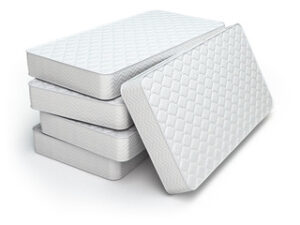Understanding The Different Mattress Types
When shopping for a new mattress, understanding the different types can help you find the right fit. Whether you want bounce or body-hugging comfort, there are mattresses designed for your sleep needs.
Innerspring mattresses use either continuous or pocketed coils. Continuous coils run the length of the mattress, while pocketed (also known as Marshall or wrapped) coils are individually wrapped and move independently to provide more contouring. Box Drop Mattress & Furniture of Selah can help you in choosing your mattress.
 Spring
Spring
If you are looking for a traditional mattress with a firmer feel, a spring mattress may be right for you. These mattresses are constructed of layers of foam stacked to maximize support, provide superior comfort, and facilitate maximum recovery during sleep. Typically, they come in a variety of firmness options so you can find the perfect one for your sleep style and individual needs.
Traditional spring mattresses use coils to offer a range of motion control and support, and they often feature a plush or polyfoam comfort layer on top. They have been around for a long time and can still be purchased in a large variety of sizes, feels, firmness levels, and prices. They do, however, tend to have a lower lifespan than foam mattresses and can begin to sag over time.
They also do not always push back evenly, which can lead to pressure points on the body that are pushed down more than others. In addition, they can have issues with temperature regulation and motion transfer, especially if you share your bed with a partner or children.
One of the most common types of spring construction is coils, which are hourglass-shaped and can be soft or firm based on the wire gauge. A higher-end option is pocketed coils, which have individually wrapped metal coils that are encased in fabric sleeves. These coils can compress independently of each other, which helps with contouring and reducing noise.
If you want the benefits of a traditional spring mattress with the added bounce and movement control that comes from foam, consider a hybrid model. Hybrid mattresses are a relatively new development that combines a foam comfort system with a coil core to balance the best of both worlds. This type of mattress can include memory foam, latex, polyfoam, or a combination of these materials.
The most popular hybrid model includes a technology that features hexagonal cutouts in the foam to increase its flexibility and adaptability to weight and movement, allowing it to conform better to the body. It also includes our foam, which is partly plant-based and has been designed to improve upon standard memory foam.
Foam
Foam mattresses are great for reducing pressure on joints while offering good spinal support. They are also lighter and quieter than traditional spring mattresses and provide good airflow to sleepers. They may, however, take longer to soften than other mattress types. This is why it is important to use a foam or natural fiber mattress topper to prolong the life of your foam bed.
A medium-firmness foam mattress provides excellent comfort and durability. This type of foam is the most economical and is an ideal choice for a temporary mattress.
Memory foam is a type of polyurethane foam that contains elastic and molds to the shape of your body. It conforms to your curves and is highly effective at reducing pressure points and providing spinal alignment. Its high resilience means it has a quick rebound and will keep its shape for years without developing permanent indentation marks.
Latex is another popular choice for those seeking an environmentally friendly and supportive mattress. It can be made in production methods which vary slightly but both create a soft, bouncy, and resilient mattress with a sponge-like feel. The natural rubber in latex is hypoallergenic, regulating temperature more capably than foam, and has minimal off-gassing, making it an ideal option for people with allergies or sensitivities.
Both latex and memory foam are more breathable than a coil mattress, meaning they can regulate temperature and prevent sleepers from feeling overheated. Many memory foam beds include cooling gel to further improve this capability, while latex beds have an open-cell structure that allows for airflow.
Innerspring mattresses rely on traditional coils for support but often incorporate polyfoam or memory foam within their layers. They are less expensive than hybrid or latex mattresses and may offer a little more bounce than foam beds. They do, however, lose out on pressure relief and motion isolation as the coils do not contour to the body and can transfer movement from one side of the mattress to the other. To counter this, some innerspring mattresses are paired with an element of foam to minimize noise and transfer.
Latex
Latex is a natural material that is durable, affordable, and eco-friendly. It’s also naturally fire resistant, meaning that latex mattresses don’t need to use toxic chemicals like PBDEs and TCEP (Tris(2-chloroethyl) Phosphate) flame retardants found in most other mattress types. This makes latex one of the safest and most environmentally conscious mattress types available.
Unlike memory foam, which tends to sag over time, latex is resilient and will hold its shape well into the long term. It’s also highly responsive to the body’s movement, allowing you to adjust your sleep position without disturbing your partner or the bed as a whole. Latex mattresses have also been shown to relieve pain more effectively than any other type of mattress. The resilient nature of latex makes it ideal for relieving pressure points, and many users report a reduction or elimination of back pain with an all-latex mattress.
There are two main types of natural latex. One uses a traditional construction method, while the other uses a more refined production process. Both are natural, but the distinction comes down to how the raw liquid latex is harvested and manufactured. The other latex is more likely to be organic, as it is processed with fewer chemicals and uses natural curing agents. The latex, on the other hand, uses more chemicals and cannot qualify as organic under current standards.
Both types of natural latex are available in a range of firmness levels, which can be tailored to individual preferences. The other construction is typically softer than the other, although this does not necessarily mean that the mattress will feel soft. Latex is also highly breathable, allowing air to flow through the mattress and wick away body heat. Lastly, latex is hypoallergenic and antibacterial, and it resists mildew and mold growth.
Hybrid
A hybrid mattress combines an innerspring and foam to provide support with a little bit of bounce. The combination is trending as a choice for those who prefer the firmness of springs but insist on the quality and contouring of foam. A good hybrid mattress will have a core of high-density foam encased in a layer of pocketed coils. These coils are surrounded by a comfort layer, which can be any type of foam, including gel, memory, or latex. Gel and natural latex are breathable, which helps prevent overheating. These foam layers are usually topped with an outer layer of cotton, wool, or microcoils to increase breathability and help regulate temperature.
A good hybrid mattress will also have a sturdy foundation that will prevent sagging and increase longevity. The support core in these mattresses is typically made from a system of ‘pocket coils’ which are smaller and individually wrapped than other coils. This design allows them to better contour the body and reduce motion transfer when compared with other open coil designs.
The mattress’s foundation is a key factor in its durability and lifespan, so be sure to consider the coil gauge or thickness before making a purchase. Higher gauge coils tend to be firmer and more durable, while lower gauge ones are softer and less durable.
While the main reason people choose a hybrid mattress is for the support of coils, it’s worth noting that these beds are just as comfortable for those who sleep on their back or stomach. The support from the coils is enough to keep these sleepers supported throughout the night, which can also minimize back pain and aches.
Another benefit of hybrid mattresses is their versatility in terms of bed frame compatibility. These beds can be placed on metal or slatted bed frames, platform beds, or even just the floor, although the latter option may hinder airflow and limit how well you sleep. Because they’re designed without the need for a box spring, these beds are also lighter and easier to move around when changing sheets or cleaning.






